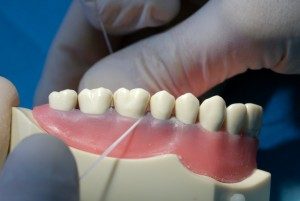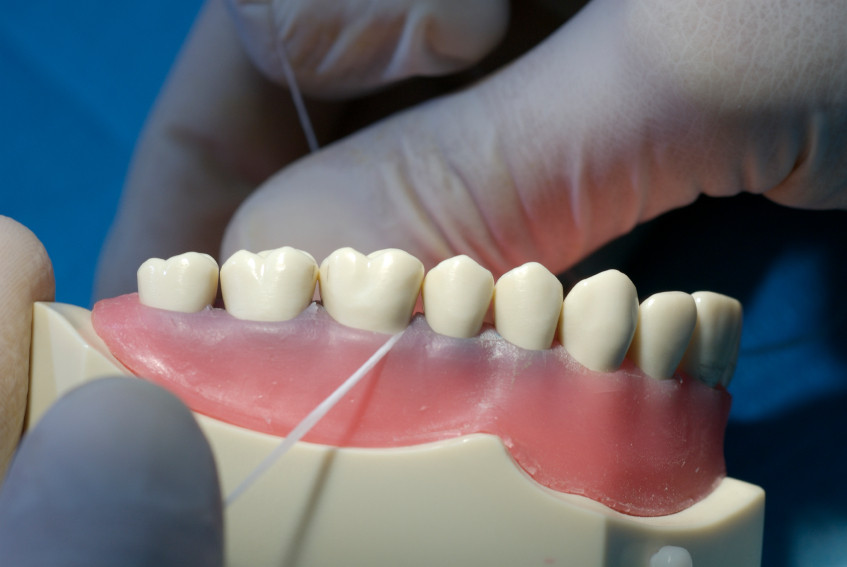Gingivitis is a term that is used quite frequently in dental offices and which is diagnosed to millions of Canadians each year. You probably know that it is something you don’t want to have, but do you really know what gingivitis is and why it happens? What happens once you have gingivitis, and what can be done about it?
If you’ve wondered this yourself, then you have come to the right place. We have outlined everything that you need to know about gingivitis, including what it is and what you can do about it.
What is Gingivitis?
 Believe it or not, gingivitis sounds much worse than it really is. Essentially, gingivitis refers to the inflammation of the gums. This inflammation is caused by built up plaque and the bacteria it contains, which naturally form on your teeth every day and is the reason why we recommend brushing your teeth and flossing each day.
Believe it or not, gingivitis sounds much worse than it really is. Essentially, gingivitis refers to the inflammation of the gums. This inflammation is caused by built up plaque and the bacteria it contains, which naturally form on your teeth every day and is the reason why we recommend brushing your teeth and flossing each day.
Gingivitis can cause your gums to become red, swollen, and often causes bleeding. Generally, gingivitis is not painful, but be on the lookout for early warning signs such as blood on your toothbrush or bleeding gums when you floss. If steps are taken to address gingivitis during the early stages, it can be reversed fairly easily.
How Did I Get Gingivitis?
Gingivitis occurs in areas of the mouth that are not properly cleaned daily. This usually happens behind the four back molars where it can be uncomfortable to floss and brush because it is much closer to the throat. Gingivitis also happens near the gumline on both the top and bottom teeth where it is commonly not cleaned properly. The lack of proper cleaning of plaque in these and other areas of the mouth is how gingivitis starts and the places to pay particular attention to when cleaning your teeth.
How Do I Treat Gingivitis?
If in the early stages, treating gingivitis is fairly easy and consists of brushing twice every day, including the tongue, cheeks, and roof of the mouth, and, ideally flossing at least once. Be sure to use a soft bristled toothbrush so as to not aggravate the gums unnecessarily, and ensure that you are cleaning between teeth and at the gum level to properly get rid of plaque before it hardens into tartar.
If you continue to ensure that plaque is removed properly every day and that the gums are stimulated through brushing and flossing, the early stages of gingivitis should soon reverse. When your gums return to a pink colour, and are no longer puffy and no longer prone to bleeding, you will know that your gums are healthy and happy again.
Read more: How to Treat Gingivitis
What Happens if Gingivitis is Left Untreated?
If the early signs of gingivitis are not noticed or are ignored, gingivitis can quickly progress into gum disease. This happens if plaque is not removed from teeth and it hardens into tartar, a substance that can only be removed professionally.


Once tartar lines the gums, infection can happen and from there major dental issues such as flesh, bone, and tooth loss can become a reality. Gingivitis causes the gums to loosen and pull away from the teeth, causing teeth to become loose and hastening gum disease. While the very early stages of gingivitis are not something to necessarily panic about as it can be treated, it is absolutely not something that should go unattended or brushed off (figuratively speaking, of course).
How Do I Prevent Gingivitis?
Prevention is key in keeping your oral health at its best, and regular dental checkups at least every six months are the best way to ensure that your teeth are being properly cleaned. Missing even one dental cleaning can lead to a flare up of gingivitis.
Be sure to take the time in the morning and before bed to care for your mouth. This includes about two minutes of brushing all sides of teeth, tongue, cheeks, and the roof of the mouth, and flossing between all teeth.
Mouthwash is a great extra step to take in ensuring that all areas of your mouth are cleaned and cared for, but we would recommend using one that is alcohol-free since those can dry things out and cause other problems. It is essential to know that pain is not a symptom of gingivitis, so being on the lookout for the other symptoms is key to prevention.
Read more: How to Prevent Gingivitis
Should I Make a Dental Appointment?
 If you think that you may have gingivitis, we recommend that you take measures to care for it yourself as soon as you can. But also be sure to make an appointment with your dentist as a follow up.
If you think that you may have gingivitis, we recommend that you take measures to care for it yourself as soon as you can. But also be sure to make an appointment with your dentist as a follow up.
The best treatment for any oral issue is delivered by a professional since they can best advise on whether or not you are caring for your mouth in the best possible way. Your dentist will also tell you if what concerns you really is gingivitis, nothing to worry about, or possibly a deeper issue. It is always better to be safe than sorry when it comes to oral health!



 December is finally here, and if you’re not already hyped about the holidays, you’re about to […]
December is finally here, and if you’re not already hyped about the holidays, you’re about to […]


